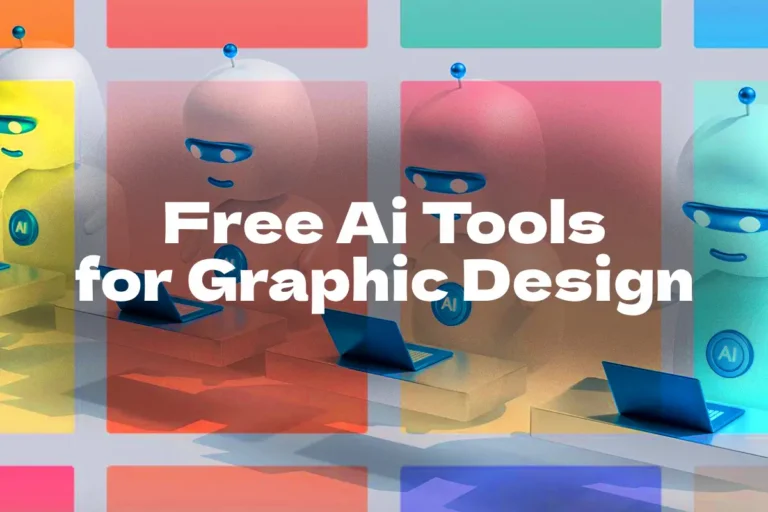Graphic design is a powerful means of communication that utilizes visual concepts and design elements to convey ideas and information. With the increasing demand for skilled graphic designers, this field offers numerous career opportunities for those who are passionate about creating compelling visuals. Whether it’s designing logos, packaging, websites, or advertisements, graphic designers strategically combine shapes, colors, typography, and other design elements to create visually appealing layouts. But what exactly is graphic design, and what does a graphic designer do? Let’s explore the role of graphic designers in this article.
Table of Contents
What is graphic design?
A Graphic Designer communicates ideas and information through visuals concepts and graphic design. Primarily using design software, they create compelling visuals that inspire and captivate audiences. Graphic Designers strategically combine design elements to develop aesthetically appealing layouts, advertisements, reports, logos, packaging, and more.
There are numerous scholars who want to obtain a professional career and graphic designing is also one of the finest professional courses. If you enjoy making designs and looking for a well paid safe career so graphic design would be a type of field where you can get the hoped-for career and can also follow your passion but to begin the journey, here the question comes,” What exactly is graphic design? What does a graphic designer do?” So here We will tell you what is a graphic design and what a graphic designer does.
What Is the Role of a Graphic Designer?
Graphic Designers create visual concepts to communicate information. They create everything from posters and billboards to packaging, logos and marketing materials. They use elements such as shapes, colors, typography, images and more to convey ideas to an audience. Graphic Designers can work in-house, creating designs specifically for one brand, or at an agency or as a freelancer, where they work with a variety of clients.
The role of Graphic Designers varies depending on where they work. Some tasks that designers may work on include selecting photos and typefaces, developing layouts, and designing logos. Graphic Designers may specialize in a particular area, such as motion graphics or print media.
They often need to communicate with clients and consumers to develop designs that portray an intended message. They also collaborate with other graphic designers, marketers, business analysts, writers, and programmers to create successful products, campaigns, or websites.
These designers have a range of responsibilities depending on their specialty and workplace. Typically, they will meet with clients or art directors to determine design needs. Using design software, they will combine images, illustrations, and text to bring an idea to life. They may also need to present their ideas and incorporate feedback from colleagues or clients into subsequent drafts.
A typical Graphic Designer job description may include some of these responsibilities:
- Study design briefs and determine requirements
- Advise clients on strategies to engage target audiences
- Identify the best ways to illustrate and communicate clients’ vision while complying with design best practices
- Create designs using illustration, photo editing and layout software
- Select colors, images, typography and layout for communication materials, including websites, logos, signs, books, magazine covers, annual reports, advertisements, and social media posts
- Produce drafts for client review and make revisions based on feedback received
- Collaborate with other team members, such as marketing, sales, and business operations, throughout the various phases of a project
- Review designs for errors before they are printed or published
- Keep up-to-date with the latest design trends, tools, and technologies
 Infographic by Toptal
Infographic by Toptal
Career Opportunity in Graphic Designing
Graphic Designing Course gives a great scope in this field. After finishing this course you have plenty of career options. Graphic Design has a massive scope and career possibilities. Graphic Designing Courses are the most demanding courses and few of them are in-demand design jobs as well. Here are the top graphic designer scope:-
- Publication Designer
- Brand Identity Designer
- Website Designer
- UI / UX Designer
- Product Designer
- Game Designer
- Advertising Designer
- Packaging Designer
- Photoshop Artist
- Illustration Artist
- Pattern Designer
- Amazon Listing Designer
Earning Potential of Graphic Designers
Graphic design is a lucrative and growing field that offers a wide range of earning opportunities for skilled and experienced designers. According to recent industry data and reports, the earning potential of graphic designers can vary based on factors such as experience, location, specialization, and industry demand.
As of March 2023, the median annual wage for graphic designers in the United States was $52,767 which means approximately $20-25 per hour, with the highest 10% earning over $85,760 per year, and the lowest 10% earning less than $34,892 per year, according to the Glassdoor’s Survey. However, freelance graphic designers and those with specialized skills, such as UX/UI design, web design, and motion graphics, can command higher rates, depending on their experience and client base.
| Annual Wage Category | Median | Highest 10% | Lowest 10% | Specialized Skills |
|---|---|---|---|---|
| Median Annual Wage | $52,767 | > $85,760 | < $34,892 | Varies based on skills |
| Hourly Wage (approx.) | $20-25 | – | – | – |
| Specialized Skills Rates | Higher rates | – | – | Experience and Client Base |
The demand for graphic designers is expected to continue growing in the coming years, with increased demand for digital and interactive designs, as well as the need for businesses to maintain strong online presence and branding. Moreover, graphic designers with expertise in emerging technologies, such as virtual reality, augmented reality, and artificial intelligence, can command even higher salaries due to their specialized skills.
It’s important to note that earning potential can also vary depending on the geographical location. Cities with higher costs of living and strong creative industries, such as New York, San Francisco, and Los Angeles, tend to offer higher salaries for graphic designers compared to smaller towns or rural areas.
Future of Graphic Designers
Graphic design has come a long way, from traditional print media to digital platforms, and the future of graphic designers promises to be even more dynamic and exciting. As technology continues to evolve and the design landscape shifts, graphic designers need to adapt and stay ahead of the curve to thrive in the competitive industry. In this article, we will explore the future of graphic design and discuss key trends, challenges, and opportunities that graphic designers are likely to face in the coming years.
Their Evolving Role
The field of graphic design is constantly evolving, and the role of these designers is undergoing significant changes in response to technological advancements and changing market demands. In the future, graphic designers will need to adapt to new tools, technologies, and design trends to stay relevant in the industry. The traditional tasks of creating static visuals will continue to evolve, and graphic designers will need to expand their skill set to include new mediums such as virtual reality, augmented reality, and interactive designs.
Emphasis on User Experience and Interaction
The future of graphic design will place a strong emphasis on user experience (UX) and interaction design. As technology continues to shape how people interact with digital content, graphic designers will need to create designs that are not only visually appealing but also intuitive, engaging, and accessible to diverse audiences. The ability to understand and design for user behavior, preferences, and expectations will be crucial in creating designs that truly connect with users.
Integration of Artificial Intelligence and Automation
Artificial intelligence (AI) and automation are transforming various industries, and graphic design is no exception. In the future, graphic designers will need to embrace AI and automation technologies to streamline repetitive tasks, such as image editing, layout generation, and data visualization. This will free up designers’ time to focus on higher-level creative thinking and problem-solving, allowing them to deliver more innovative and customized designs.
Sustainability and Ethical Design
As concerns about sustainability and ethical design continue to gain traction, the future of graphic design will place increased emphasis on creating designs that are environmentally responsible, socially conscious, and inclusive. Graphic designers will need to consider the environmental impact of their designs, such as reducing waste and promoting sustainable materials. Additionally, ethical considerations such as diversity, inclusivity, and cultural sensitivity will be paramount in creating designs that resonate with a diverse global audience.
Collaboration and Multidisciplinary Skills
Graphic designers of the future will need to possess strong collaboration skills and be able to work in multidisciplinary teams. As design projects become more complex and involve different stakeholders, designers will need to collaborate with experts in other fields, such as developers, marketers, and data analysts, to create holistic and impactful designs. The ability to communicate and collaborate effectively with diverse team members will be critical in delivering successful design solutions.
Conclusion:
Graphic design offers a wide range of career opportunities, with various specializations such as publication design, brand identity design, website design, UI/UX design, and more. As a graphic designer, one may work in-house for a particular brand, at an agency, or as a freelancer, collaborating with clients and colleagues to bring ideas to life. With the constant evolution of design trends, tools, and technologies, staying updated is crucial in this field. If you have a passion for design, pursuing a career in graphic design can be a rewarding choice with ample opportunities for growth and creativity.

FAQs:
What are some of the responsibilities of a graphic designer?
Some typical responsibilities of a graphic designer may include studying design briefs and determining requirements, advising clients on strategies to engage target audiences, selecting colors, typography, images, and layout for communication materials, producing drafts for client review, collaborating with team members throughout the various phases of a project, reviewing designs for errors before they are printed or published, and keeping up-to-date with the latest design trends, tools, and technologies.
Where can graphic designers work?
Graphic designers can work in various settings, including advertising agencies, design studios, corporations, non-profit organizations, and government agencies. They can also work as freelancers and offer their services to a variety of clients.
What skills are required to become a successful graphic designer?
To become a successful graphic designer, one should have skills like creativity, communication, problem-solving, time management, attention to detail, and proficiency in design software like Adobe Photoshop, Illustrator, and InDesign. Knowledge of typography, color theory, and design principles is also essential for a successful career in graphic design.




